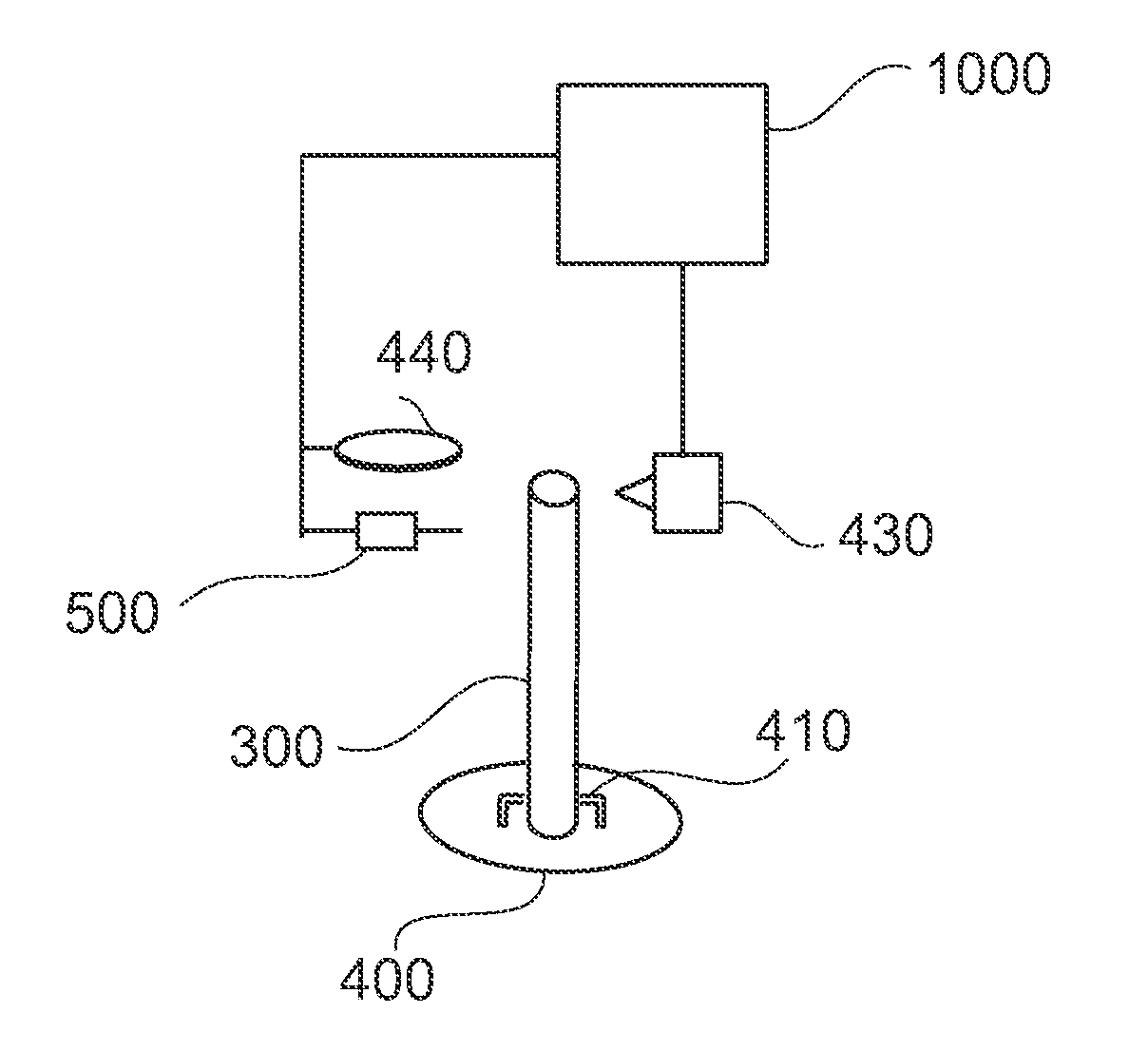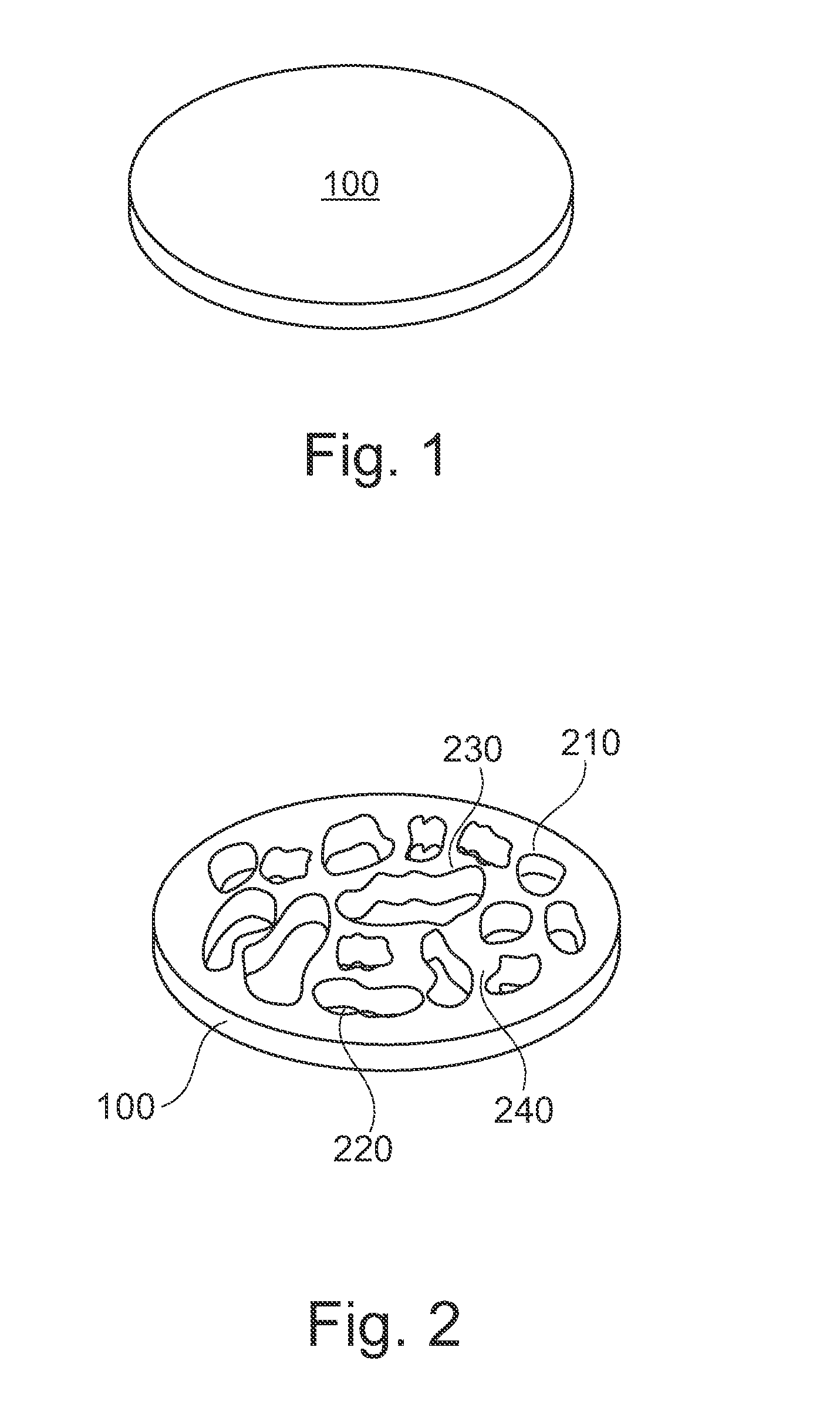Method and apparatus for the production of extraoral dental prostheses
- Summary
- Abstract
- Description
- Claims
- Application Information
AI Technical Summary
Benefits of technology
Problems solved by technology
Method used
Image
Examples
Embodiment Construction
[0049]In the following figures the same reference number indicates the same element.
[0050]FIG. 3 shows exemplarily one possible embodiment of a base body for use in the method according to the disclosure. The rod-shaped base body, which, for example, consists of a chromium-cobalt alloy, according to the disclosure is used to produce a tooth replacement part by means of turning. A typical length of the rod-shaped base body is up to 2 m.
[0051]Thereby, the method functions according to the embodiment illustrated in FIG. 4 as follows: the base body 300 is anchored by means of, for example, a clamping device 410 on the rotary plate 400. The rotary plate can be powered by a motor. The rotation speed should be matched with the ideal cutting speed.
[0052]By way of example and schematically, the grinding chisel 420 and 430 are shown in the embodiment of FIG. 4. According to another embodiment only one grinding chisel is used, which is optionally positionally and directionally adjustable. The ...
PUM
| Property | Measurement | Unit |
|---|---|---|
| Diameter | aaaaa | aaaaa |
| Diameter | aaaaa | aaaaa |
| Length | aaaaa | aaaaa |
Abstract
Description
Claims
Application Information
 Login to View More
Login to View More - R&D
- Intellectual Property
- Life Sciences
- Materials
- Tech Scout
- Unparalleled Data Quality
- Higher Quality Content
- 60% Fewer Hallucinations
Browse by: Latest US Patents, China's latest patents, Technical Efficacy Thesaurus, Application Domain, Technology Topic, Popular Technical Reports.
© 2025 PatSnap. All rights reserved.Legal|Privacy policy|Modern Slavery Act Transparency Statement|Sitemap|About US| Contact US: help@patsnap.com



